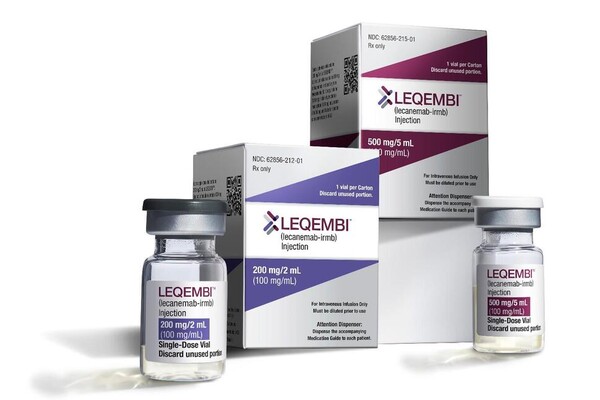Between the two Alzheimer’s treatments targeting beta-amyloid – Aduhelm (aducanumab) and Leqembi (lecanemab) – the latter has won because of its specific targeting ways, patient groups, and administrative doses, according to an expert.
Biogen and Eisai developed Aduhelm and won approval from the U.S. Food and Drug Administration as the first Alzheimer’s treatment in 2021. Leqembi, the second such drug, got the FDA’s nod on Jan. 6.
“More research should be done on the difference between the two drugs,” said Professor Lim Jae-seong of the Neurology Department at Asan Medical Center in Seoul and PR director at the Korean Dementia Association, commenting on the FDA’s fast-track approval of Leqembi. “However, experts at academic conferences commonly pointed out that the way lecanemab works were more successful in targeting than aducanumab.”

Lecanemab targets during the protofibril phase, the early stage of beta-amyloid binding. However, aducanumab targets a step later, after protofibril combines to form a fibril. The latter also targets beta-amyloid in a large framework. Still, the exact target point of time is different, Professor Lim added.
“Besides targeting, lecanemab’s raising required doses in the early stage also helped,” he said. “Unlike other drugs that conducted clinical trials by dividing doses, Leqembi’s developers used sufficient doses in sufficient time, and that made a difference,”
In the case of aducanumab, developers designed clinical trials by dividing low-dose and high-dose groups and administered 10mg/kg even in the high-dose group. In contrast, the developers of lecanemab carried out trials by dividing subjects into only place and the 10mg/kg group and extensively used it with an interval of two weeks.
Accordingly, lecanemab recorded the Clinical Dementia Rating-Sum of Boxes) of 1.21 against the placebo’s 1.66, showing a 27 percent high prevention effect of functional drops. Also, in the ADAS-Cog 14 points, one of the secondary evaluation variables, lecanemab, stood at 4.14 against the placebo’s 5.58, confirming a clinically significant statistic.
“Lastly, lecanemab’s patient group participating in clinical trials was broader,” Lim said. “Such differences produced different results. Only when follow-up studies analyze these differences will we know what specific elements made significant differences.”
Aducanumab targeted 50-85-years-old patients with mild cognitive impairment (MCI) due to Alzheimer’s and light Alzheimer’s aged between 50 and 85 and set the MMSE (Mini-Mental State Examination) score of between 24 and 30 points as the main criterion. On the other hand, lecanemab targeted those with a median possibility among 50-to-90-old patients according to the Alzheimer’s diagnosis guideline of NIA (National Institute Aging)-AA criterion. Lecanemab also set a broader MMSE criterion score of between 22 and 30.
However, lecanemab also has problems to overcome – side effects.
In the phase 3 clinical trial of Clarity AD, lecanemab saw side effects related to injection in 26.4 percent of patients and ARIA(Amyloid-Related Imaging Abnormalities) side effects accompanied by edema in 12.6 percent of patients. Two died of brain bleeding.
Professor Lim noted that experts should watch side effects when finding risk groups as lecanemab is a treatment developing new targets.
“We need to examine the examples leading to death carefully,” he said. In a future environment where real drugs are administered, medical professionals can select specific risk groups, including those with amyloid encephalopathy or those administered with anticoagulants.”
He stressed that people shouldn't interpret that a single medicine will solve all diseases and revive their memory as it used to be.
“It is encouraging and noteworthy that a drug that can fundamentally treatment has come out to treat a disease like Alzheimer’s that had no fundamental treatment,” he said. “I think it a bridgehead of sorts.”

